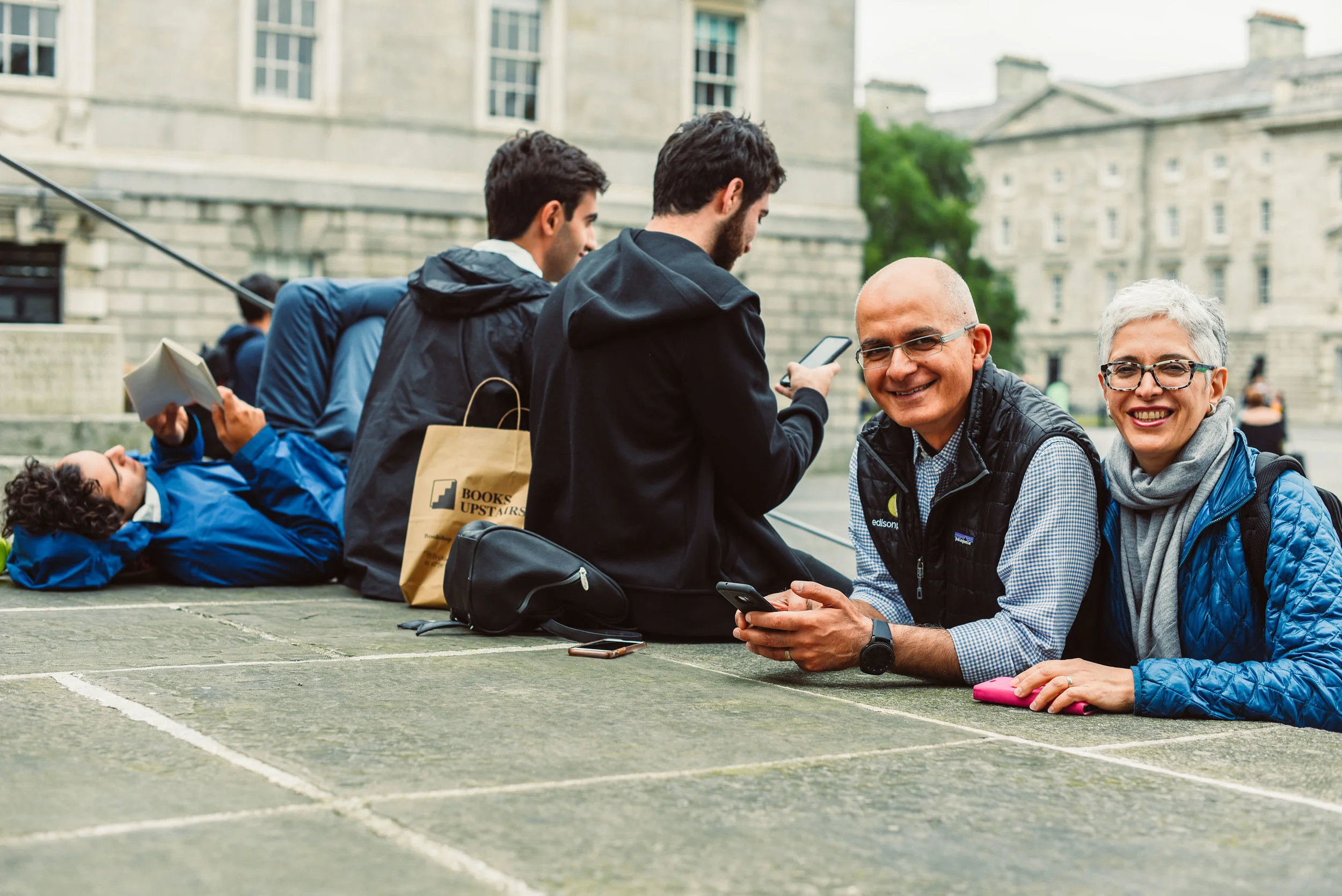Our first day in Dublin just happened to be the Women’s Mini Marathon, a race in which over 41,000 women participated. Men ran in the race too, many of them dressed up as women with terrible wigs and hilarious dresses. After the race, the pubs were full with bib numbers and tulle skirts and boisterous laughter. Kian and I got some red lager at one of the pubs and spent our time just soaking in the free entertainment. Even though we were in the middle of the country’s capital, I felt like we were at a neighborhood spot. The people were just so friendly and comfortable to be around.
No matter where we went in Ireland, whether it be a big city or a tiny town, empty kegs lined the alleyways. The piles of kegs brought me flashbacks of college parties, but the pub atmospheres weren’t like that at all. Rather, they were a place for building community.
Of course, the nature was gorgeous. Gorgeous and green and soft. All of the trees, the hills, the patches of grass all looked so weather-worn and wise. This was definitely compounded by the fact that ruins from hundreds of years ago were everywhere. For me, the long human history in Ireland makes the landscape even more compelling and haunting. Barely detectable rock walls and crumbling foundations whispered to me of struggle and survival, of victory and defeat. I could not imagine what footsteps crossed before me. I could only feel them.
A delightful feature of European cities is the secret plazas and courtyards that you don’t see from the street. Ireland seemed full of these. We walked into a bookshop, only to see at the back of the store a door to a hidden bakery tucked into an overgrown patio. On another afternoon, we found a little garden café at the end of an alley where we sat among curious birds as we drank tea and practiced blind contouring. Sitting in these hidden places took us away from the honking cars and the marching pedestrians. It was like we’d stepped off the sidewalk into another world.
We made on of our most special discoveries on the trip as we drove from Galway to the Dingle Peninsula. On a whim, we opted to exit the highway and meander through a neighborhood for a little exploring. Our first find was a ruined 18th-century English mansion that sat atop a hill overlooking the ocean. The decaying walls still showed outlines of finials that decorated doorways, and crows roosted in the crannies. The echoes of a stately home were almost drowned out by the incessant cawing. Almost. Somehow, this place maintained dignity despite its disintegration.
After our tour of the ruins, we drove to the end of a residential peninsula and came upon a pier where locals were swimming in the ocean. There were no signs or gates to suggest any rules – just stone steps leading into the salty water. Three girls, one with fiery red locks, had ridden their bikes there and sat with their legs dangling off the edge over the water. A couple and their three dogs enjoyed the view as they roamed the cobblestones A white-haired, pot-bellied man dried off vigorously while he offered us tales of his many travels.
This tiny pocket of time on our trip felt so truly Irish, I was almost sorry we’d stumbled upon the scene as the tourists that we were. It was idyllic. The sun was shining, the day was warm, and the water was cool. The locals were so open with their stories and opinions. I felt nervous about their reaction to six foreigners spilling out of a van onto their perfect afternoon, but they made it immediately clear that there was room for everyone on the pier. The precious minutes we spent there will sparkle in my memory forever.
The Cliffs of Moher were breathtaking. Wildflowers clung to the edge, peering over the cliffside with no one to hold them back. Sea birds nested precariously inside small openings along the face of the cliff. It was totally mesmerizing to watch the waves swell and burst hundreds of feet below us. Their colors would change from blue to teal, teal to froth in a never-ending dance. It’s bizarre and wonderful to think about that dance happening now as I write this, thousands of miles away. Like a heart beating day and night that will long outlive my own.
Irish brown bread has only four ingredients that combine to create a rustic flavor so unadorned, so simple. Its taste makes me think of the potato famine that scars Ireland's history, during which 25% of the country’s population went into their grave or across the ocean to a fresh start. I’d take a bite of the bread and wonder what it must have been like to lose one out of every four people you know, all while fighting starvation yourself. I’m not sure of the history of the brown bread recipe, but I imagine it is one of those basic items that became a culinary classic out of necessity. Perhaps it was crafted by a mother in her bare kitchen trying to keep her children from withering down to bare bones. To me, its hardy flavor represents the toughness and solidarity of the Irish people. Brown bread can stand alone, but I enjoyed it more when it arrived alongside an entrée. The bread and the entrée come together to make an experience that is better than either can provide alone.
Togetherness is better.
The colors in Ireland are something I will continue to remember vividly. I dream of the whimsical and bright cities, the warm pastoral sunsets. I see foxgloves growing here in Virginia and think fondly of their fuchsia cousins sprouting like weeds on the Irish roadsides. I smell grass after a hot rain and think of the green hills, those old green hills.



